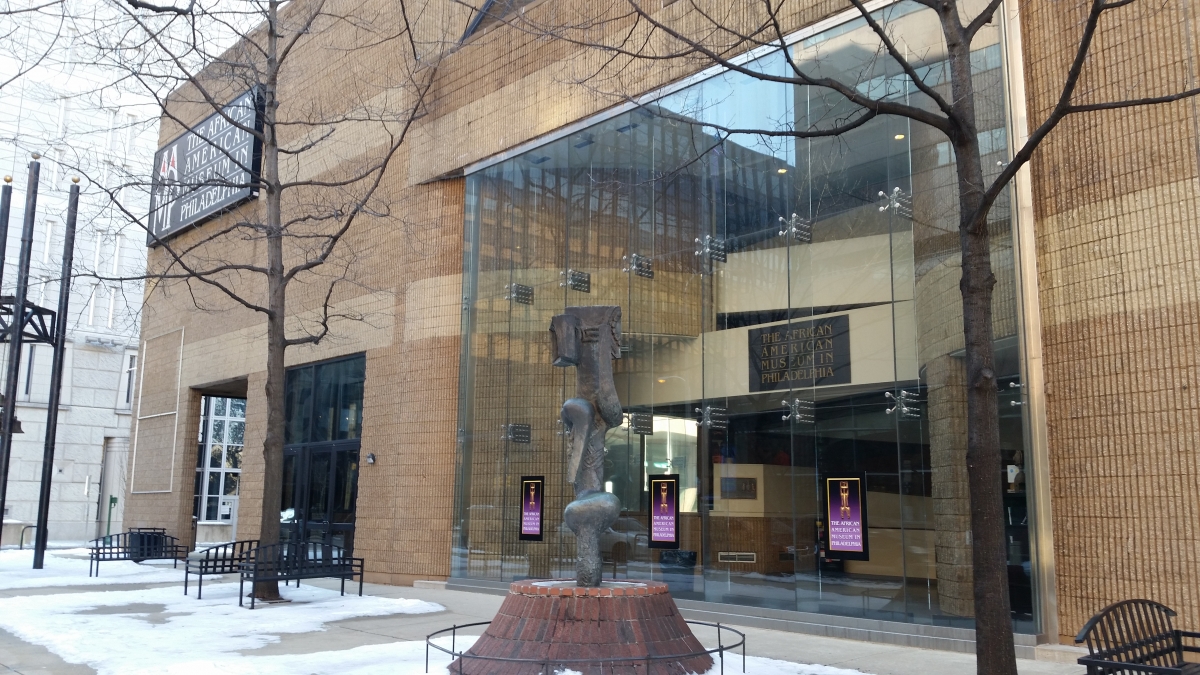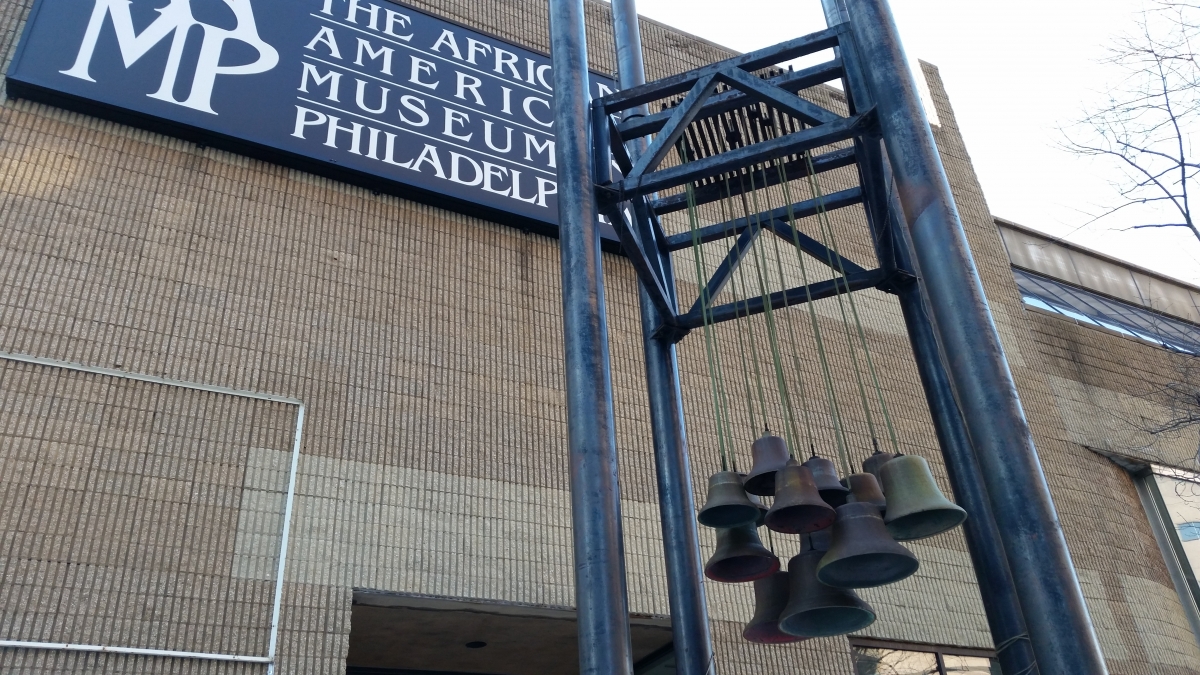The first institution built by a major United States city to interpret the life and work of African Americans.
The History
In 1976, Philadelphia prepared for a Bicentennial celebration that organizers estimated 100 million people would attend. Many of Philadelphia’s historic buildings were restored and readied for tourists, while the Liberty Bell was moved out of Independence Hall to its own grand pavilion. Another aspect of the Bicentennial preparations was the creation of an entirely new museum, the African American Museum in Philadelphia. This new museum would ensure that visitors coming to Philadelphia to celebrate America's 200th birthday would have the oppurtunity to explore the important and yet often unheralded contributions of African Americans to the founding of America. The African American Museum set out to celebrate and interpret African American history and culture, especially as it pertained to Philadelphia.
The African American Museum was an important aspect of the Philadelphia Bicentennial Celebrations as Philadelphia has long been a center of African American life. In 1780, Philadelphia passed “An Act for the Gradual Abolition of Slavery,” becoming the first American state to begin the abolition of slavery. While the act did not grant instant abolition to all enslaved African Americans in Pennsylvania, it did guarantee that all children born in Pennsylvania were free persons regardless of the condition or race of their parents. The abolition of slavery in Pennsylvania made Philadelphia, then the most populous city in the United States, a popular destination for free and escaped slaves from across the country.
The large population of free African Americans in Philadelphia quickly grew into a thriving community. An early leader of the community included Richard Allen, a former slave and minister who founded the first national African American church denomination in the United States, the African Methodist Episcopal Church. Allen became the church’s first bishop and preached at Mother Bethel Church. The land on which the current Mother Bethel Church stands today is the oldest continuously African American-owned parcel of land in the United States.
Throughout Philadelphia’s history local African Americans have had an impact in numerous fields. Philadelphia was a prominent stop along the Underground Railroad and then a century later a significant force in the civil rights movement. In academia W.E.B. Du Bois was among the first African Americans to research at an Ivy League University (University of Pennsylvania), and his landmark study, The Philadelphia Negro was the first case study of an African American community in the United States. In the arts Francis Johnson was recognized as “America’s first native-born master of music” and centuries later Kenny Gamble and Leon Huff helped to craft the “Philadelphia Sound.” Today the African American Museum attempts to conceptualize this rich history and much more through the use of extensive historic collections, exhibitions and unique presentations.
What to See
In 2009, the African American Museum underwent and extensive renovation project which included the creation of a new permanent display, Audacious Freedom: African Americans in Philadelphia 1776-1876. This display focuses on the contributions made by people of African descent in Philadelphia during the years following the founding of America and deep into the 19th century.

An interactive timeline guides guests through 100 years of African American history in Philadelphia using images, documents and historical records to explore the lives of Philadelphian African Americans during this turbulent time and their unheralded impact on America. Giant video projections allow historical figures to come to life, giving a voice to African American Philadelphians such as Octavious Catto, Frances Watkins Harper, and the aforementioned Richard Allen. The permanent Audacious Freedom display also includes a children’s corner where kids between the ages of 3 and 8 can explore history in a hands on environment.
The African American Museum also includes temporary exhibitions that change throughout the year. Currently an exhibition from the Petrucci Family Foundation Collection of African American Art is on display called “As we see it.” This collection allows visitors to see works of art through the unique context of the art of local youths. Over 100 students from Philadelphia and the surrounding region contributed art to the display which also includes the works of African American masters such as Henry O. Tanner, Barbara Bullock and Dawoud Bey. For more information on the exhibitions currently on display, please view the African American Museum in Philadelphia’s website.
Insider Tips
When the African American Museum first opened in 1976, it was known primarily as a source for African American history. However, after the 2009 renovation, the museum has established itself not only as source for history but for the arts as well. The African American Museum in Philadelphia has since grown into one of the largest collections of African and African American art in the country.
One of the most significant collections of art that is housed at the African American Museum is the Philadelphia Civic Center Museum Collection. Previously housed in the now demolished Philadelphia Civic Center Museum, this collection consists of over 400 African artifacts. With many of the pieces dating back centuries, this collection includes a diverse array of beautiful artistic creations including ceremonial objects, textiles, jewelry, and musical instruments. The collection, primarily from Western Africa, also includes items like weapons, tools, and clothing.
In some cases, the line between art and history is blended, as is the case with the photography collection of Jack T. Franklin. Franklin was a prolific photographer throughout his life and his collection of over 500,000 negatives and photographs were given to the African American Museum upon his death. The photographs show the history of African American life in the 20th century, including many photos of cultural and political events in Philadelphia’s African American community. These events included all of the major events of the 1960’s Civil Rights movement. The photos are invaluable views of the past that help us to understand our history while at the same time the photos of this turbulent time are undeniably powerful and artistic.

How to Get There
Guests of The Constitutional Walking Tour can easily walk to the African American Museum from the National Constitution Center where our tours conclude. Simply walk west along Arch St and the African American Museum is only one block away at the intersection of 7th and Arch Streets. The African American Museum is also one of the stops allong the route of The Constitutional Bus Tour.
Those commuting from elsewhere in the city will find the Museum easy to reach by public Transportation. The African American Museum is only minutes away from subway stops on the Market Frankford Line, the PATCO subway and Broad Ridge Spur. The African American Museum is also just a few blocks away from Jefferson Station (formally Market East Station,) a major hub for Philadelphia’s Regional Rail System.
Hours
Thursday – Saturday: 10:00am – 5:00pm
Sunday: 12:00pm – 5:00pm
(Note: these hours are subject to change and you may want to contact the African American Museum in Philadelphia to confirm.)
Additional Information
African American Museum in Philadelphia
701 Arch Street
Philadelphia, PA 19106
215.574.0380




